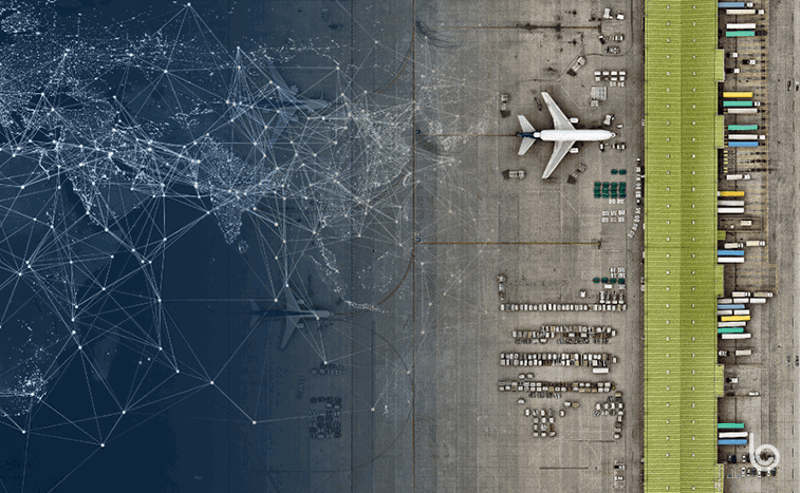Now, more than ever, all stakeholders in the supply chain need to collaborate through digitization to ease port congestion and prevent future supply chain disruptions.
Port congestion, truck driver shortages and empty shelves are commonplace these days. Domestic trucking capacity, not to mention chassis for those trucks, can be hard to find. According to Lincoln Pei, a sales director and port expert at Blume Global, the root causes are numerous:
“The supply chain disruptions are a result of changing consumer spending habits, warehouse space and labor capacity limitations, cargo volume surges, outdated infrastructure and environmental concerns, railcar supply/flow challenges, terminal density and fluidity issues, trucking capacity and regulatory limitations, and equipment constraints such as in the case of intermodal chassis.”
In the last two years, demand grew at a rate equivalent to 50 million Americans joining the economy. With its just-in-time principles that encourage no slack and little redundancy, the supply chain industry was quickly overwhelmed by increasing consumer demand during the pandemic. Supply is still lagging behind demand, because it can take years to build new warehouses or ships, increase port capacity and hire new workers.
In addition to soaring demand, worker shortages continue to contribute to supply chain disruptions. In 2021, the trucking industry was short 80,000 drivers, leading to high shipping container dwell times and port congestion. Similarly, the warehouse industry had 490,000 job openings in July 2021, a number that has not gone down considerably since then. This means that even with President Biden's plan of keeping ports open 24/7, which some in the industry thing won’t make much of an impact, there just aren’t enough workers to process goods. In some cases, there’s not enough capacity available to transport those goods. Warehouses will continue running out of space.
While global supply chain disruptions were triggered by the pandemic, the problems seen today are systemic. COVID-19 simply highlighted them. Even back in 2019, the American Trucking Association estimated a shortage of 60,000 drivers, and concern about the driver-shortage situation has been voiced since at least 2015. Unfortunately, these problems aren’t going to go away on their own. To reduce the current congestion and improve agility in the supply chain, stakeholders need to collaborate and share information in real-time. That’s where supply chain technology can help.
How supply chain technology can help stakeholders collaborate
A web-based drayage marketplace can alleviate supply chain congestion at ports and inland terminals by enabling shippers to find hidden dray trucking capacity and carriers to book chassis while generating new business. Many of these marketplaces ask members to pay an annual fee, but shippers can find complimentary solutions that uniquely expand their access to trucking capacity, allowing them to find trusted drayage providers on the spot market. The best of these solutions can also help port terminal operators by providing and encouraging a more efficient flow of goods from the nation’s overwhelmed ports.
“Technology solutions can foster a digitized logistics process, connecting every piece of the puzzle to keep things running efficiently and effectively,” Pei said.
Technology, automation, and digitization can also help:
- Improve service levels while cutting costs by 30%
- Offer end-to-end supply chain visibility
- Combat port worker shortages
- Provide accurate information on truck capacity and driver status
- Track shipments in real-time
- Improve transfer and handoffs
- Process invoices and payments faster and more accurately
- Provide alternative transportation options when faced with bottlenecks
- Save time by digitizing and automating manual processes
Working together through supply chain digitization
No single stakeholder group is responsible for untangling the supply chain and increasing efficiency at ports and inland terminals. Instead, shippers, carriers, and port and terminal operators need to buy in and work together.
How does Blume Global fight freight transportation congestion at ports and inland terminals? Collaboration. Sign up for CarrierGo Live today to see how uniting the efforts of shippers, carriers and terminal operators can help straighten out the tangled supply chain: https://bit.ly/32AbT9N
contact us
Contact Us

